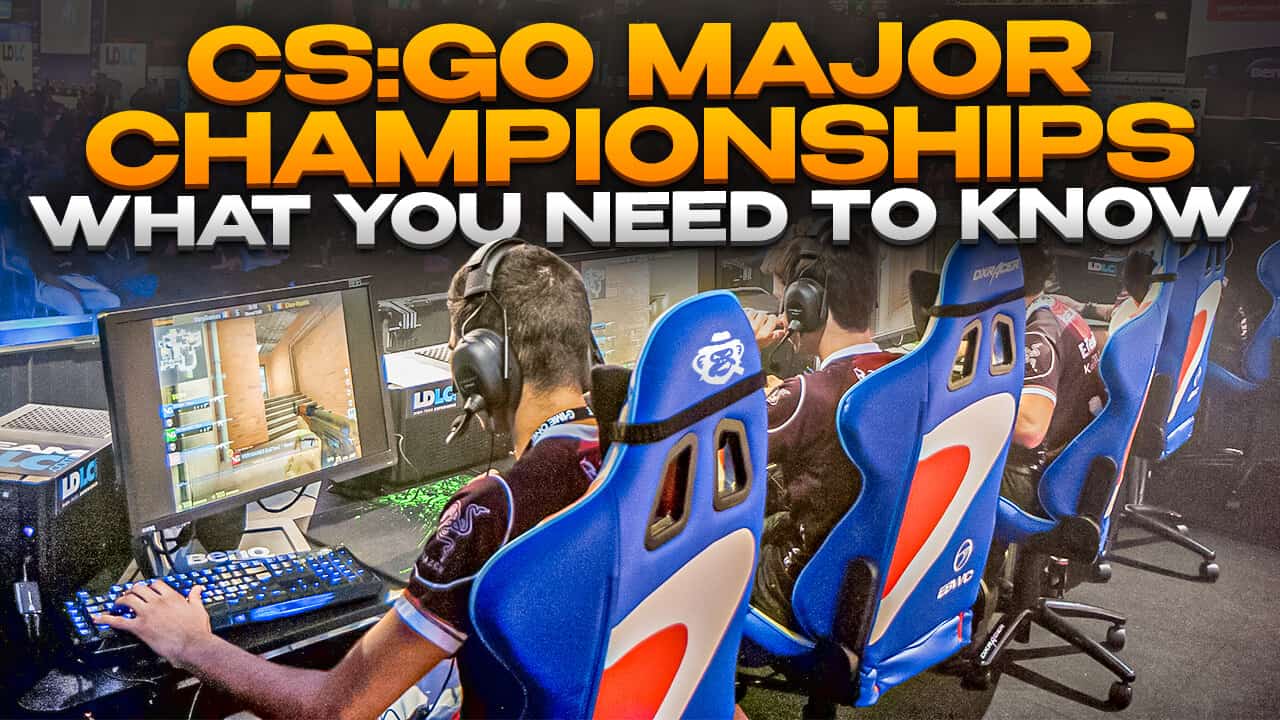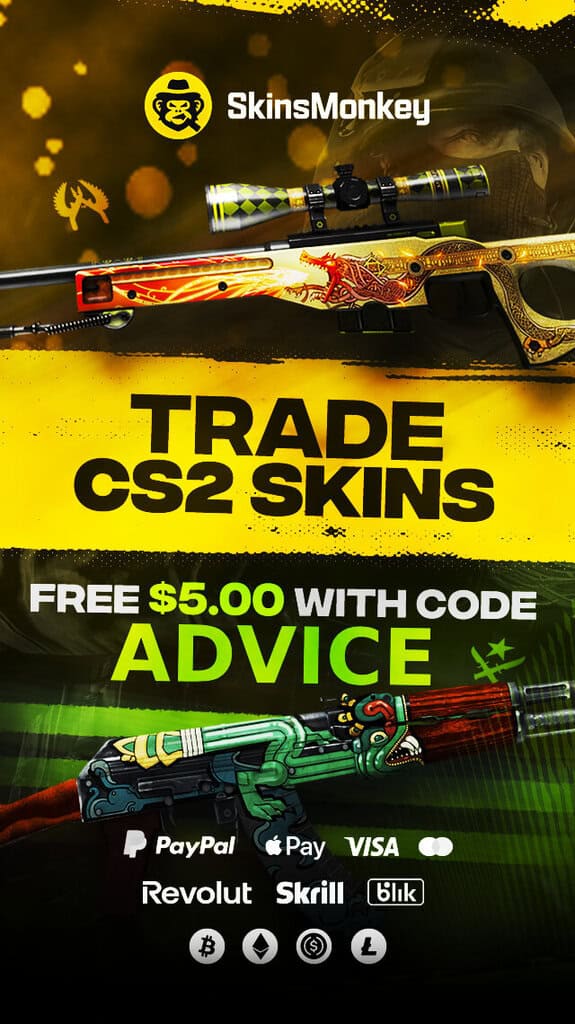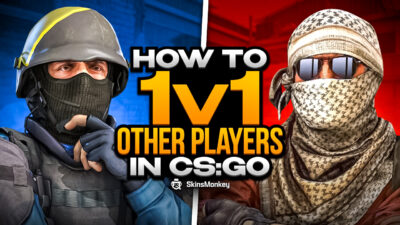CSGO Majors: What You Need to Know
Counter-Strike: Global Offensive Major Championships, also called Majors, is one of the biggest events in the world of eSports. Almost every CS:GO player has either heard about it, seen it, or dreamed of participating in it. However, if you're just learning about the Majors for the first time, there's no need to panic. We have come to your rescue and will explain everything there is to know about it. In our article, you will learn not only what the CS:GO Major Championship is, but also how it works, when it takes place and who the current Major Champion is.
What Exactly Are the CS:GO Major Championships?
The CS:GO Major Championships, also known as the CSGO Majors, have been officially held since 2013. It is one of the biggest and most prestigious tournaments in the world of eSports, as well as the most important event in the Counter Strike community. The history of Majors actually dates back to as early as 2001, when the Cyberathlete Professional League Winter Championship was first organized. However, the event gained importance and international fame only when Valve Corporation decided to become its official sponsor. Today, thanks to the massive exposure and contribution of the Steam founder, Majors are held annually in some of the world's largest stadiums and offer a prize pool of at least $1000000.
What Was the First Major?
The first official major was held in 2013 in Jönköping, Sweden. An eSports company called DreamHack was the main organizer of the event, which was thus named DreamHack Winter 2013. Valve Corporation was the largest sponsor, allowing the tournament to be held at the Elmia Exhibition and Convention Centre, a large venue with an indoor space of 34,000 m2. The prize pool was $250000, and members of the Swedish team Fnatic became its first official recipients, and first major winners.
How Do CSGO Majors Work?
Majors are divided into different stages, which are:
- The New Challengers Stage
- The New Legends Stage
- The New Champions Stage
There are 3 different stages. However, as in most tournaments, there are also regional qualifiers that are not part of the main event. These tournaments are called Minors, and during these, players have to fight their way to the final event. Sounds pretty straightforward, right? Unfortunately, it's a bit more complicated than just playing matches and moving up in the leaderboards, especially since some significant changes were introduced in 2016. We will try to explain everything as clearly as possible.
Let's start from the beginning.
Minors
As aforementioned, the Minors are regional qualifiers to determine the winners who will participate in the CS:GO Major Championships. Prior to 2020, they were held in the form of smaller events, with a prize pool of $50,000provided by Valve Corporation. However, when the ESL One: Rio 2020 Majors were canceled, due to the outbreak of the Covid-19 pandemic, the CS:GO Minor Championships were replaced by the Regional Major Ranking System, which is a qualification system divided into 3 main regions: Asia-Pacific, Europe, and the Americas. This basically means that the best teams, from each region, will be able to participate in the official tournament, after scoring points in the smaller regional competitions. So even though the Minors are no longer officially being held, players still call it that when referring to the regional qualification stage.
The New Challengers Stage
The New Challengers Stage, which was formerly known as The Major Offline Qualifier, is the first official stage of the main event. During this phase of the competition, 16 teams face each other in an attempt to advance to the next round. As of 2020, they all come from the Regional Major Ranking Systems, but previously this stage also included the Previous Major's Fallen aka the bottom teams from the second stage of the last Major. The new Challengers stage utilizes a “Swiss format.” This means that in order to advance, a team must win 3 games out of 5. Only then can they stop playing matches and advance to The New Legends Stage.
The New Legends Stage
The next stage of the competition is The New Legends Stage, formerly known as The Group Stage. Here the eight teams that won The New Challengers Stage and the eight teams with the highest Regional Ranking System scores face each other in order to advance to the finals. The format of this stage is the same as that of the previous stage, i.e. “Swiss format”. This means that the goal is also to win 3 matches out of 5 (and to do it as quickly as possible). The top 8 teams will advance to the final round.
The New Champions Stage
In the final phase, formerly known as the Playoffs, the top eight teams with the best results in The New Legends Stagewill face each other in the fiercest matches in the entire competition. This stage is no longer based on a “Swiss format.” Instead, the best-of-3 rule applies. Ultimately, there is only one team that wins the entire Major Championship, and thus receives the grand prize.
What Is the Current Prize Pool of the CSGO Majors?
In 2001, at the Cyberathlete Professional League Winter Championship, the prize was about $20000. When Valve became the main sponsor of the championship, that is, in 2013, the amount was already $250000, which was already very impressive. Nowadays, however, the rewards are significantly higher. In the previous major, which was the eighteenth installment of the competition and was held in Rio de Janeiro, the winner of the tournament turned out to be the international team called Outsiders. Its members took home not only the major trophy, but also the largest offered prize pool to date, that amounted to $2 million.
Where Were Previous Major Championships Held?
Over the years, the CS:GO Major Championship has become a very prestigious event that gathers a large live audience every year. Players from all over the world are eager to watch the tournament with their own eyes and experience the incredible excitement firsthand. Consequently, they are willing to travel all over the world to attend, as well as spend lots of money on tickets and hotels. CSGO Majors can be a huge boost to a country's economy, and for this reason cities from all over the world compete every year for the chance to host the championship. Previous editions have been held in different parts of the globe, which include:
- DreamHack Winter 2013
- ESL Major Series One Katowice 2014
- ESL One: Cologne 2014
- DreamHack Winter 2014
- ESL One: Katowice 2015
- DreamHack Open Cluj-Napoca 2015
- ESL One: Cologne 2015
- MLG Major Championship: Columbus 2016
- ESL One: Cologne 2016
- ELEAGUE Major: Atlanta 2017
- PGL Major Kraków 2017
- ELEAGUE Major: Boston 2018
- FACEIT Major: London 2018
- IEM Season XIII – Katowice 2019
- StarLadder Berlin Major 2029
- PGL Major Stockholm 2021
- PGL Major Antwerp 2022
- IEM Rio Major 2022
Where Are the 2023 Majors Organized?
The next CS:GO Majors tournament, aka BLAST.tv Paris CS:GO Major 2023, will be held in Paris. It will take place from May 8-21, with qualifiers slated for February and March of 2023. French President Emmanuel Macron announced that the official venue for the tournament will be the Accor Arena, which can accommodate between 7,000and 23,000 people, depending on the type of event being hosted. Tournament organizers have yet to announce the official prize pool for 2023, but given last year's historically hefty amount, it's safe to assume that the reward will cater to the winner.
Conclusions
CS:GO Majors is the largest Counter Strike competition and one of the most important events in eSports. Every year, gamers from all over the world gather to watch who will claim another Major victory. Now that you know all about the event, it might be high time to start following what's going on in the world of Major League gaming, and maybe even consider attending or participating. And who knows? Maybe the next Paris Major is your chance to start a career in CS:GO tournaments! But before you try out, be sure to secure your perfect loadout at SkinsMonkey.com, where you can learn more about CSGO (CS2), trade skins and many more!!
A true gaming enthusiast, especially Counter-Strike: Global Offensive (CS2) and Rust. At SkinsMonkey, he is involved in creating game guides based on his own experience.




